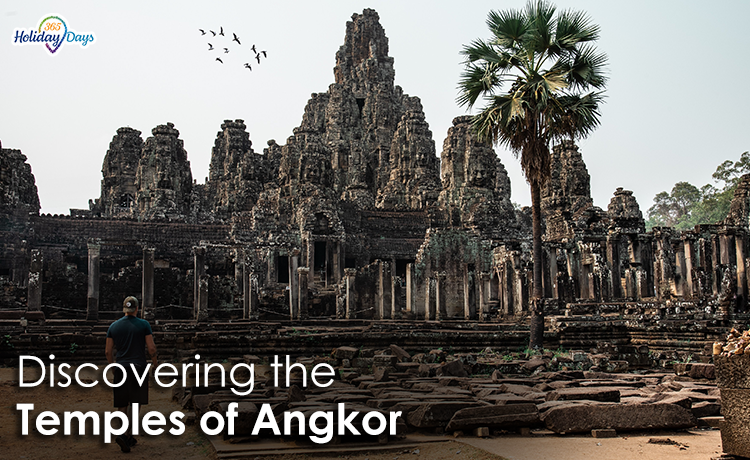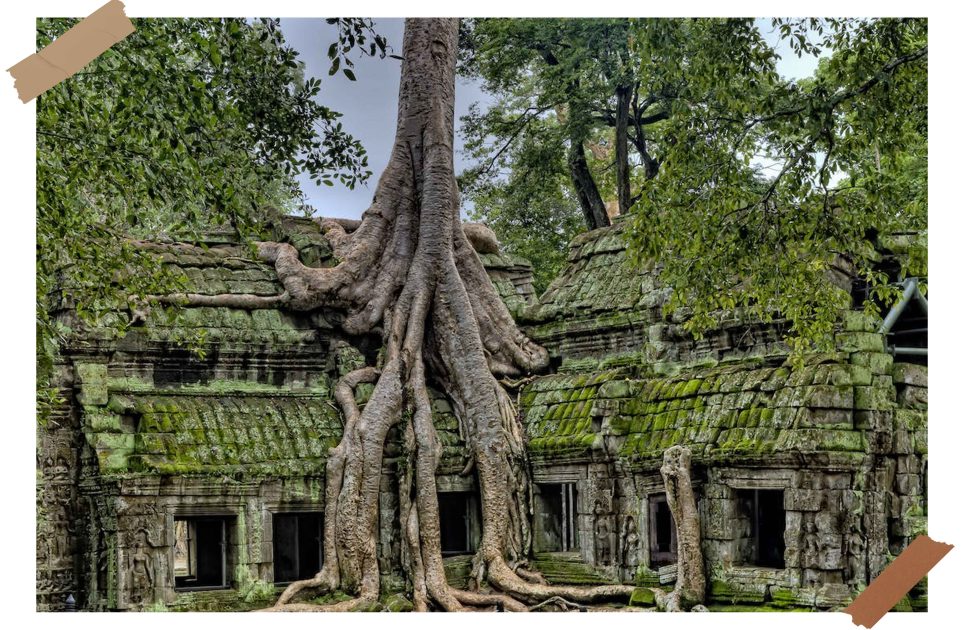
Hidden amidst the lush jungles of Cambodia lies a breathtaking complex of architectural marvels that has captivated the hearts and minds of travelers and historians alike for centuries. The Temples of Angkor, a UNESCO World Heritage site, stand as a testament to the ingenuity, creativity, and spiritual devotion of the Khmer civilization that once flourished in Southeast Asia. This remarkable complex offers a journey through time, inviting visitors to step into a world where ancient mythology and artistic prowess converge.
Unveiling the Mystique
The Temples of Angkor are a collection of ruins and structures that were once part of the Khmer Empire, which reached its zenith between the 9th and 15th centuries. The heart of this complex is Angkor Wat, an awe-inspiring temple that embodies both architectural brilliance and spiritual significance. Dedicated to the Hindu god Vishnu and later repurposed as a Buddhist monument, Angkor Wat is a symbol of the cultural transition that took place within the empire.
Beyond Angkor Wat, the sprawling archaeological site encompasses numerous temples, each with its own unique design and purpose. Bayon Temple, characterized by its massive stone faces, exudes a sense of mystery and intrigue. Ta Prohm, with its roots entwined around the stone walls, offers a glimpse into the power of nature’s reclamation. Banteay Srei stands out for its intricate carvings and delicate pink sandstone construction, showcasing the incredible craftsmanship of the Khmer artisans.
Architectural Marvels

The architectural brilliance of the Temples of Angkor is a testament to the advanced engineering skills and artistic prowess of the Khmer civilization. The structures were meticulously designed to align with cosmic forces and celestial events, reflecting a deep understanding of astronomy and mathematics. The symmetry, intricate carvings, and elaborate bas-reliefs that adorn these temples speak to the dedication and precision of the craftsmen who brought these visions to life.
The grandeur of Angkor Wat’s towering spires and intricate galleries, the enigmatic smiles of the Bayon’s stone faces, and the delicate beauty of Banteay Srei’s carvings all evoke a sense of wonder and admiration. The fusion of architectural genius and spiritual devotion created a harmonious sanctuary that continues to inspire awe and reverence to this day.
Exploring Ancient Myths
The Temples of Angkor are not merely stone structures; they are repositories of ancient myths and religious beliefs. The intricate bas-reliefs that adorn the walls of these temples tell stories from Hindu epics like the Ramayana and the Mahabharata, as well as scenes from daily life during the Khmer Empire. These carvings serve as a visual chronicle of history, allowing modern visitors to connect with the past and gain insight into the lives, values, and aspirations of the people who once inhabited this land.
Conservation Challenges and Future Preservation
While the Temples of Angkor have withstood the test of time, they face new challenges in the modern era. Increased tourism and environmental factors, such as humidity and erosion, threaten the structural integrity of these ancient wonders. Conservation efforts are underway to protect and preserve these treasures for future generations. This involves a delicate balance between maintaining the authenticity of the sites and ensuring their sustainability.
A Timeless Pilgrimage
Exploring the Temples of Angkor is not just a journey to discover ancient ruins; it is a pilgrimage that connects us with the spirit of a civilization that has left an indelible mark on history. As the sun rises over the majestic spires of Angkor Wat or sets behind the enigmatic smiles of the Bayon, visitors are reminded of the impermanence of all things and the enduring legacy of human creativity and devotion.
Concerned about MOBILE COVERAGE in Cambodia?
Read: Benefits of eSIMs for International Travel
In a world of rapid change and modernization, the Temples of Angkor stand as a reminder of the timeless beauty that can emerge when artistic brilliance, religious fervor, and a profound connection to the cosmos converge. Embarking on a voyage to these ancient wonders is an opportunity to step into the past, embrace the present, and contemplate the intricate tapestry of human history that continues to weave itself into the fabric of our world.
